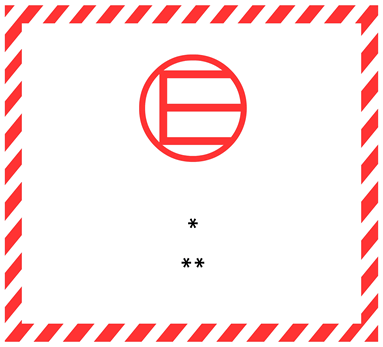Dangerous Goods Carried as the Property of Operators
Operators can carry certain dangerous goods without the normal restrictions if they are on the aircraft for safety & for passenger sevice reason:
| (a) | Aircraft Equipment |
| These are articles and substances which would otherwise be classed as dangerous goods but are required to be aboard the aircraft in accordance with the pertinent airworthiness requirements and operating regulations, or that are authorised by the state of the operator to meet special requirements. Examples would be life jackets, life rafts, fire extinguishers, oxygen cylinders, etc.. | |
| (b) | Consumer Goods |
| Aerosols, alcoholic beverages, perfumes, colognes, safety matches and liquefied gas lighters carried aboard a passenger aircraft by the operator for use or sale on the aircraft during the flight, or series of flights, but excluding non-refillable gas lighters and those lighters liable to leak when exposed to reduced pressure. | |
| (c) | Carbon dioxide, solid (Dry Ice) |
| Carbon dioxide solid (dry ice) for use in food and beverage service aboard the aircraft. | |
| (d) | Aircraft Spares |
| Unless otherwise authorised by CASA, aircraft spare parts intended for replacements, for example the items listed in part (a) above, must be transported in accordance with the DGR when it is consigned by the Operator. | |
| (e) | Battery-Powered Electronic Equipment |
| Electronic devices such as electronic flight bags, personal entertainment devices and credit card readers, containing lithium metal or lithium ion cells are permitted on board an aircraft only when used on the aircraft during flight. Spare batteries must be individually protected to prevent short circuits when not in use. |
New measures for hygiene products have recently been added to the IATA DGR under section 2.5.1.4 due to recent Covid-19 safety measures. This new addition allows Operators to carry alcohol-based hand sanitizers and alcohol-based cleaning products aboard an aircraft for use on the aircraft during the flight or series of flights for the purposes for passengers and crew hygiene.
If any of the above dangerous goods are carried on board an aircraft for any other reason than stated in a, b, c, d, e or the hygiene products mentioned above, then it must be consigned as dangerous goods cargo, correctly identified, packed, marked, labelled and documented.
Dangerous Goods in Excepted Quantities
Very small quantities (30 ml or less, 30 g or less) of certain dangerous goods may be transported by air and are exempt from some of the more restrictive marking, labelling and documentation requirements of the IATA DGR. For example commercial samples such as perfumes, and scientific samples in ethanol are often transported this way.
There are stringent packaging requirements for sending small amounts of dangerous goods as "Excepted Quantities". Packages must have inner packaging containing the dangerous good. This is then surrounded by absorbent material (called intermediate packaging). These inner packagings are then enclosed with an outer package.
In other words, this method of sending permitted substances of up to 30 g or 30 ml is very safe!
Dangerous Goods transported in Excepted Quantities must also have the following label applied to one face package for identification purposes:
 |
* - The Class or, when assigned, the Division number(s) must be shown in this location. ** - The name of the shipper or of the consignee must be shown in this location if not shown elsewhere on the package. |
|
1.Transporting dangerous goods in Excepted Quantities must still be sent as cargo/freight. 2.Excepted Quantity packaging must not be taken aboard an aircraft by a passenger or crew member as carry-on or checked baggage. |
De Minimis Quantities
There is another method of sending even smaller amounts of dangerous goods by air. It is possible for a shipper to send very small amounts of permitted dangerous goods of up to 1 mL or 1 g and not be subject to most of the IATA requirements. This is called sending dangerous goods in De Minimus Quantities.
Section 2.6.10 of the IATA DGR outlines the provisions for De Minimis quantities of dangerous goods. Shippers sending permitted dangerous goods by this method still have strict packaging requirements, similar to sending dangerous goods as Excepted Quantities.
Dangerous goods sent by De Minimis packaging only requires an inner package with absorbent material, surrounded by an outer package. No special label is required on the package to denote that this is De Minimis.

